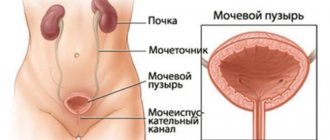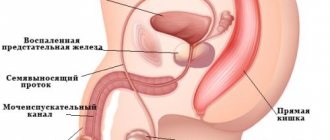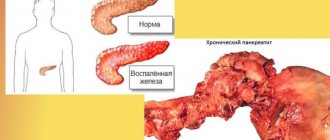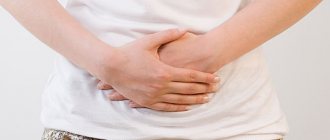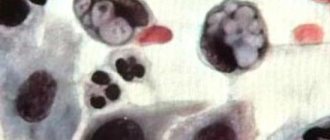General information
Difficulty passing urine from the bladder (dysuria) is often accompanied by pain, so painful urination is sometimes classified as dysuria.
Mild painful urination in women, which is felt as mild discomfort and goes away on its own after a couple of days, may be a variant of the physiological norm.
Pain when urinating may:
- be cutting in nature, accompanied by burning and other unpleasant sensations;
- localized in the urethra (urethra), in the genitourinary area, in the lower abdomen, or extend to the lower back and legs;
- be accompanied by frequent urination with small amounts of urine discharge;
- appear at the beginning or end of urination.
Traditional treatment
Along with traditional medicine, you can also use folk remedies, but medical supervision is also necessary here. The following methods will help you with this:
- Treatment with lingonberry leaves. To prepare this remedy, you will need a large spoon of raw materials, half a liter of water at room temperature and allow time to brew (about 30 minutes). Later you will need to bring the product to a boil; cooking will take about a quarter of an hour. Ultimately, the entire volume of liquid should be reduced by half. The prepared broth must be cooled and strained. You need to take one tablespoon several times a day. This remedy will help cope with such an unpleasant phenomenon as cystitis.
- Treatment with bear ears. To prepare such a useful infusion, you will need a large spoon of herbs. It will need to be poured with 250 ml of boiling water and allowed to brew in a steam bath for half an hour. Then you will need to strain and cool the product. Later you need to add a little boiled water to obtain the original volume. The product should be consumed 175 ml several times a day.
- Treatment with dill seeds. To prepare an effective infusion, you will need a large spoon of seeds. You need to put them in a thermos and add one glass of water at room temperature. After 20 minutes, you can start using the solution. It is advisable to use 100 g of the product several times a day. This miracle infusion will help reduce pain at the end of urination.
- Treatment with cucumber seeds. Such a product will need to be reduced to a powder state. Later you need to take two medium spoons of raw material and pour in a whole glass of boiled water. Prepare the solution for 20 minutes over low heat. The strained solution should be consumed half a glass several times a day. It is advisable to use the product 30 minutes before meals.
- Lettuce treatment. It is absolutely easy to create a miracle infusion from this plant: you will need half a medium spoon of the leaves of this plant, then you need to pour in a glass of boiled water and let it infuse for a couple of hours. You need to consume one large spoon several times a day.
Experts have long recognized the effectiveness of many folk remedies, but doctors remind that self-medication is unacceptable even when you use natural remedies. It is necessary to carry out a course of treatment for pain in the lower abdomen during urination in women under the supervision of a doctor.
Source
https://youtu.be/mttXSAn2aN8
Causes of painful urination
The cause of painful urination can be a variety of infections of the genitourinary system, as well as external factors.
Urinary tract infections
The main cause of pain when urinating is urinary tract infections (UTI), which are divided into:
- upper urinary tract infections, in which the source of infection is localized in the kidneys (pyelonephritis);
- lower urinary tract infections, in which the infection is localized in the bladder (cystitis), urethra (urethritis) and prostate (prostatitis).
In clinical practice, it is often difficult or impossible to delineate the location of the infection, since it can spread from one area to another.
Urine that is formed and excreted by the kidneys is sterile. An infectious process in the organs of the urinary system develops when various microorganisms penetrate into the lumen of the urethra (most often the causative agent is Escherichia coli, which normally lives in the large intestine).
Factors that increase the likelihood of developing a urinary tract infection include:
- The presence of diabetes and other chronic diseases that reduce the body's resistance to infections.
- Female. The physiological structure of the urethra in women poorly prevents the penetration of pathogens inside.
- Old age, since people in this group experience age-related immunodeficiency.
- Pregnancy, in which there is a change in the location of organs in the abdominal cavity. Stagnation of urine that occurs due to pressure from the uterus provokes the active proliferation of microorganisms in the urinary system, and hormonal imbalance causes a decrease in immunity.
- Some methods of contraception (diaphragm ring, etc.) facilitate the penetration of microorganisms into the urethra.
- Enlarged prostate or other structural features of the genitourinary system that affect the outflow of urine.
- Kidney stones, which provoke stagnation of urine and the development of an infectious process.
- The presence of a urinary catheter, which is the entry point for infection.
Other common causes
In addition to urinary tract infections, painful urination in men and women can be caused by:
- Urolithiasis, in which calculi (stones) form in the bladder and kidneys. The disease manifests itself as a feeling of discomfort in the kidney area, pain in the lower back, groin and genital area (the localization of pain depends on the location of the stone). Accompanied by acute pain or burning when urinating, which may be intermittent.
- Genital herpes. The disease may manifest as a characteristic rash that appears on the genitals, or be asymptomatic. With herpetic lesions of the urethra and bladder, pain and pain are observed at the beginning of urination.
- Chlamydial infection. The disease is caused by bacteria (chlamydia), which are sexually transmitted. Chlamydia in women is manifested by a burning sensation and itching in the labia and vagina, pain in the lower abdomen and mucous discharge from the genital tract. When the urethra is damaged, urination becomes frequent and painful. In men, chlamydia most often provokes the development of urethritis.
- Gonorrhea is an infectious disease that is caused by bacteria (gonococci) and is transmitted sexually. The acute form of the disease at the initial stage of the disease is manifested by pain when urinating. The pain is more intense in the morning, and mucopurulent discharge from the urethra is present.
- Syphilis is an infectious disease that is transmitted primarily through sexual contact. The initial stage of the disease is characterized by the formation of hard chancre at the site of introduction of the pathogen. Pain when urinating is typical for men.
- Tumors of the urinary tract. Painful and frequent urge to urinate occurs with constant irritation of the ureters or bladder, or with damage to the nerve plexuses that regulate the activity of the urinary tract.
- Allergic reaction to intimate hygiene products, scented toilet paper, spermicides. As a result of an allergic reaction, irritation and swelling appear, which intensify when urinating and cause pain.
- Mechanical irritation of the urethra (such irritation can be caused by sexual activity, cycling, wearing underwear made of rough material, etc.).
In addition, spondyloarthritis and arthropathy can cause painful urination. With these pathologies of the musculoskeletal system, lesions of the urinary tract may be observed.
Painful urination can also be a side effect of certain supplements, medications, and treatments.
Since the genitourinary system of men and women has anatomical differences, there are also specific causes of painful urination characteristic of each gender.
Painful urination in women
Pain when urinating in women is usually a sign of an infection in the genitourinary tract. Since women's urethra is shorter and wider than men's, pathogens can easily enter.
Urinary tract diseases include:
- Cystitis is a lesion of the bladder mucosa, which is manifested by frequent urination or frequent false urges, pain in the lower abdomen and pain and pain in the urethra at the end of urination. Urine may have an unusual color, and upon palpation there is pain in the suprapubic area.
- Urethritis is an inflammation of the urethra, which is accompanied by cutting, pain and burning at the beginning of the urination process. There is mucopurulent discharge from the urethra with a specific odor.
- Pyelonephritis is a kidney disorder in which painful urination is observed due to an ascending infection (the disease develops when the infection penetrates through the ureters). The disease is manifested by pain in the lumbar region, elevated body temperature, symptoms of intoxication and chills.
Since the urethra in women is located near the entrance to the vagina, pain when urinating can cause:
- Vaginitis (colpitis) is inflammation of the vaginal mucosa. The disease is accompanied by vaginal discharge, itching and irritation of the vagina and external genitalia.
- Vulvovaginitis is an inflammation of the external genitalia and vaginal mucosa. Accompanied by itching, burning and pain in the external genital area. The pain increases with urination and walking.
- Cervicitis is an inflammation of the cervical canal of the uterus, which may be accompanied by vaginal discharge, dull or nagging pain in the lower abdomen, pain in urination and sexual intercourse.
If pain during urination occurs only at night, pathology of the uterus or rectum is suspected.
Painful urination can also occur as a result of changes that are associated with menopause.
Painful urination in men
In men, pain when urinating is most often caused by urethritis.
In addition to the general causes that cause pain when urinating in both men and women, there are also specific causes of pain:
- Prostatitis is inflammation of the prostate gland, which is caused by infections, injuries, etc. Pain with this disease is felt in the lumbar region and lower back, in the scrotum and perineum. Urination is painful, accompanied by pain or burning.
- Phimosis is a narrowing of the foreskin, which can be physiological or pathological. With a pronounced narrowing of the foreskin, pain is present when emptying the bladder, since urine first accumulates during urination and is then released drop by drop.
Painful urination in a child
Pain when urinating in a child may occur when:
- infectious diseases of the genitourinary system;
- urolithiasis;
- a foreign object entering the urethra;
- vesicoureteral reflux, which is characterized by the return of urine to the ureters;
- obstruction (obstruction) of the urinary tract as a result of mechanical narrowing or functional disorders;
- congenital anomalies of the genitourinary tract;
- functional disorders of the urinary system;
- rare emptying of the bladder.
In infants, pain when urinating can be caused by crystalluria, a pathology in which salts in the urine crystallize and injure the urethra.
In boys, the cause of painful urination can be phimosis, and girls most often suffer from cystitis.
Signs of a urinary tract infection in young children usually appear in a latent form - irritability, tearfulness appear, appetite worsens, and there may be a low-grade fever that is poorly controlled by antipyretic drugs. The child begins to complain of pain only after 2 years.
Symptoms
You should consult a doctor if you have been experiencing:
- pain that appears during or after urination;
- pain in the lower abdomen;
- pain in the pubic area in women;
- pain and pain in the urethra that are not associated with urination;
- unusual discharge from the vagina and urethra;
- pain associated with sexual intercourse;
- pain that radiates to the stomach, legs or lower back;
- fever;
- involuntary or frequent urination;
- difficulty urinating;
- changes in urine (blood or pus appears, color or quantity changes).
The presence of these symptoms is always a sign of a pathological condition. Any of the listed symptoms must be quite pronounced and observed repeatedly.
Drug treatment
You need to understand that antibiotics are substances that always have contraindications and a number of possible side effects. Before starting to use these drugs, it is preferable to conduct a urine test to determine the infectious agent, as well as a study of the resistance of this bacterial strain to different types of drugs and susceptibility to them.
After antibiotic treatment of pain in the lower abdomen during and after urination has been carried out, the woman should submit her urine for bacteriological culture to determine the absence of pathogens.
In order to reduce pain, it is necessary first of all to reduce the consumption of sour foods, spicy foods, too salty and eliminate alcoholic drinks. It is also recommended to take “No-shpu” or “Spazmalgon”. But in no case should we forget that at the first unpleasant symptoms you need to go to the doctor for diagnosis.
If the burning sensation is caused by an allergy and itching is present, then in this case it is necessary to take antihistamines such as Tavegil or Zodak.
If urolithiasis has been diagnosed, then in this case it is recommended to drink plenty of alkaline or acidic drinks.
When the nature of the disease is neurological, then in this case it is recommended to use sedative herbal remedies, such as “Fitosed” or “Sedavit”.
If a strong burning sensation occurs during urination or after urination, then drugs with diuretic properties, such as Cyston or Urolesan, are prescribed.
Which doctor should I contact?
The presence of discomfort or pain when urinating requires contacting:
- urologist - a specialist who treats diseases of the genitourinary system;
- venereologist - a doctor who treats sexually transmitted diseases;
- andrologist - a specialist who treats diseases of the male reproductive system;
- gynecologist - a doctor who treats diseases of the female reproductive system.
Depending on concomitant pathologies (diabetes mellitus, etc.), consultation with other specialists may be required.
Consultation with these specialists includes a medical history and laboratory tests that allow you to determine the cause of pain and choose the appropriate treatment tactics.
